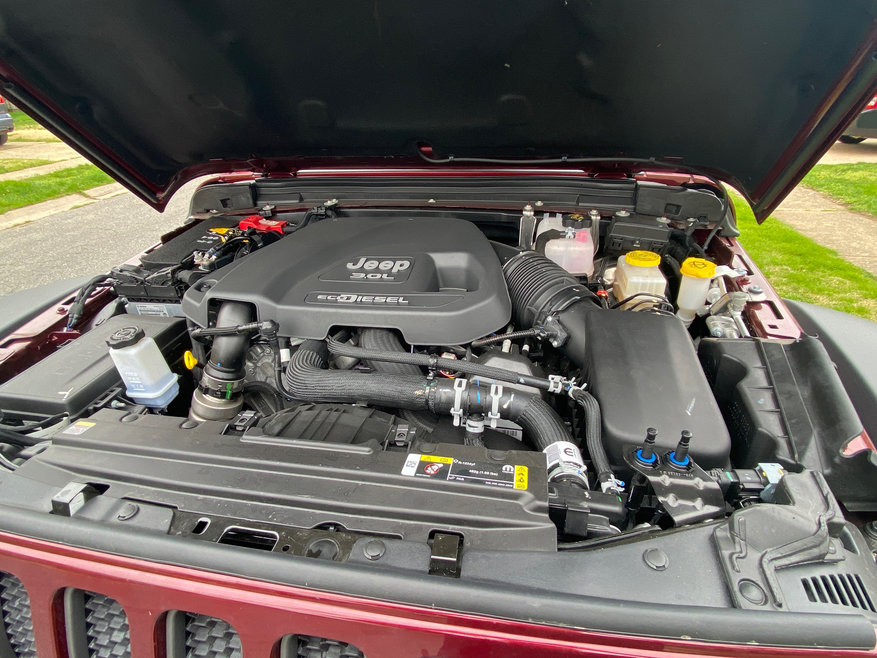by Matt Konkle
Managing Editor
Choices. Whether it is having options on where to off-road, types of vehicle products, styles of soft tops, or even, yes, engines, that innate ability to personalize our vehicle the way we want, and the way we want to drive, is an excellent way to increase ownership satisfaction.
For years, though, one of those was simply a no-go when you wanted to purchase a Wrangler.
The engine.
That’s because, for its entire lifespan, the JK Wrangler came with only one engine option depending on the model year you purchased. Even the TJ, for some of its existence, had limited factory engine options.
Sure, if you hated the factory engine you could swap it out for something more powerful later, and some did, but for most this type of change over was cost-prohibitive.
These days, the current JL-edition Wrangler thankfully gives its buyers (at least those seeking an automatic transmission) the ability to re-take some decision-making ability by offering five different engine types — including the 392 Wrangler and 4xe. These include the 3.6L Pentastar, 3.0L EcoDiesel, 2.0L turbocharged four-cylinder (which also incorporates into the hybrid 4xe) and 6.3-liter 392 V8.
And between those options, it often leads to the question: What is the best Jeep Wrangler engine?
Spoiler alert — for automatic buyers there may not be a one-size-fits-all answer. For those who still love using the three-pedal system, well, the 3.6L Pentastar is going to be your only factory choice.
When it comes down to deciding which engine is best, you could look at sheer horsepower and torque between the different versions to make your decision. But those figures can only go so far in the process, and may not represent the whole picture.
So we like to recommend an overall view that incorporates real on-road drivability, off-road capability and fuel economy. And yes, we know the memes that read ’twenty years from now you’ll never remember getting 'x' miles-per-gallon.’ The fact is, many of those in the daily-driver crowd who also like taking the Jeep off-road do care about getting more mileage out of their vehicle.
Here are the options:
2.0L Turbocharged Four Cylinder
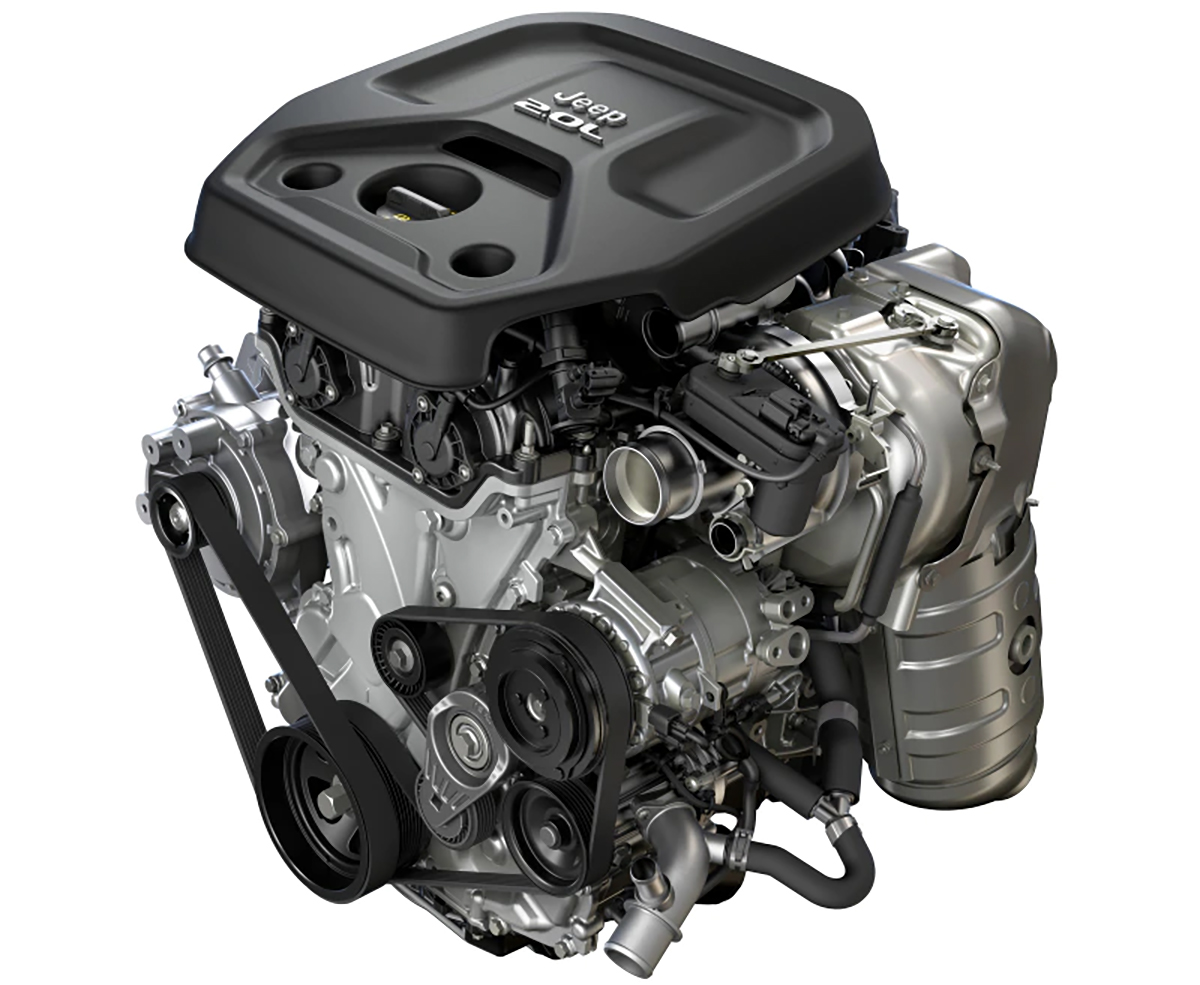
Jeep revised this powerplant in 2021 as it had been a mild-hybrid version for 2019 and 2020 that involved an electric motor generator to help provide immediate power.
These days, the 2.0L is now the standard engine in almost any automatic Wrangler on a dealership lot. And based on regional sales data we’ve seen, it seems to be the most popular-selling engine right now for Wrangler as well. It offers 270 horsepower and 295 lb-ft. of torque, which is down slightly in horsepower from the larger 3.6L engine, but up a bit in torque. As a turbocharged engine, its power delivery at lower RPMs is absolutely noticeable and you’ll have no issues charging off the line in a hurry. Nor will you notice any turbo lag as that power is instantly available when pushing on the accelerator.
If anything, for those who have previously driven the 3.6 Pentastar, the 2.0L doesn’t really have that top-end burst. But then again, you probably will not even notice as this engine more than adequately powers its way along in traffic, or passing other vehicles. Additionally, the 2.0 in-line four-cylinder only mates with Jeep’s eight-speed automatic transmission.
This engine is also extremely solid, for a Wrangler, in the fuel economy department with EPA estimates placing it between 22 mpg (city) and 24 mpg (hwy). In a Rubicon edition and hard top, we were slightly better than 22 mpg during highway tests, and just over 18 mpg in heavy stop-and-go traffic, which was nice to see after years of generating just over 13 mpg in a 2014 3.6L Wrangler.
One thing to consider, you can run this 2.0L with regular grade 87-octane gasoline, as Jeep does recommend using 91-octane for best performance.
Off-road seems the spot where everyone starts knocking this engine, and perhaps that’s an unfair comparison to make — especially against the diesel and its muscular 442 lb-ft. of torque, but the 2.0L does have a slightly different feel when off-road.
At slower low-range crawling speeds, the vehicle’s 'want to go' pep does make it a different driving dynamic compared to the Pentastar, which builds its power at higher rpm ranges. Still, when you get used to this quirk, then it does not take long to master controlling that throttle for a smoother experience.
3.6L Pentastar V6
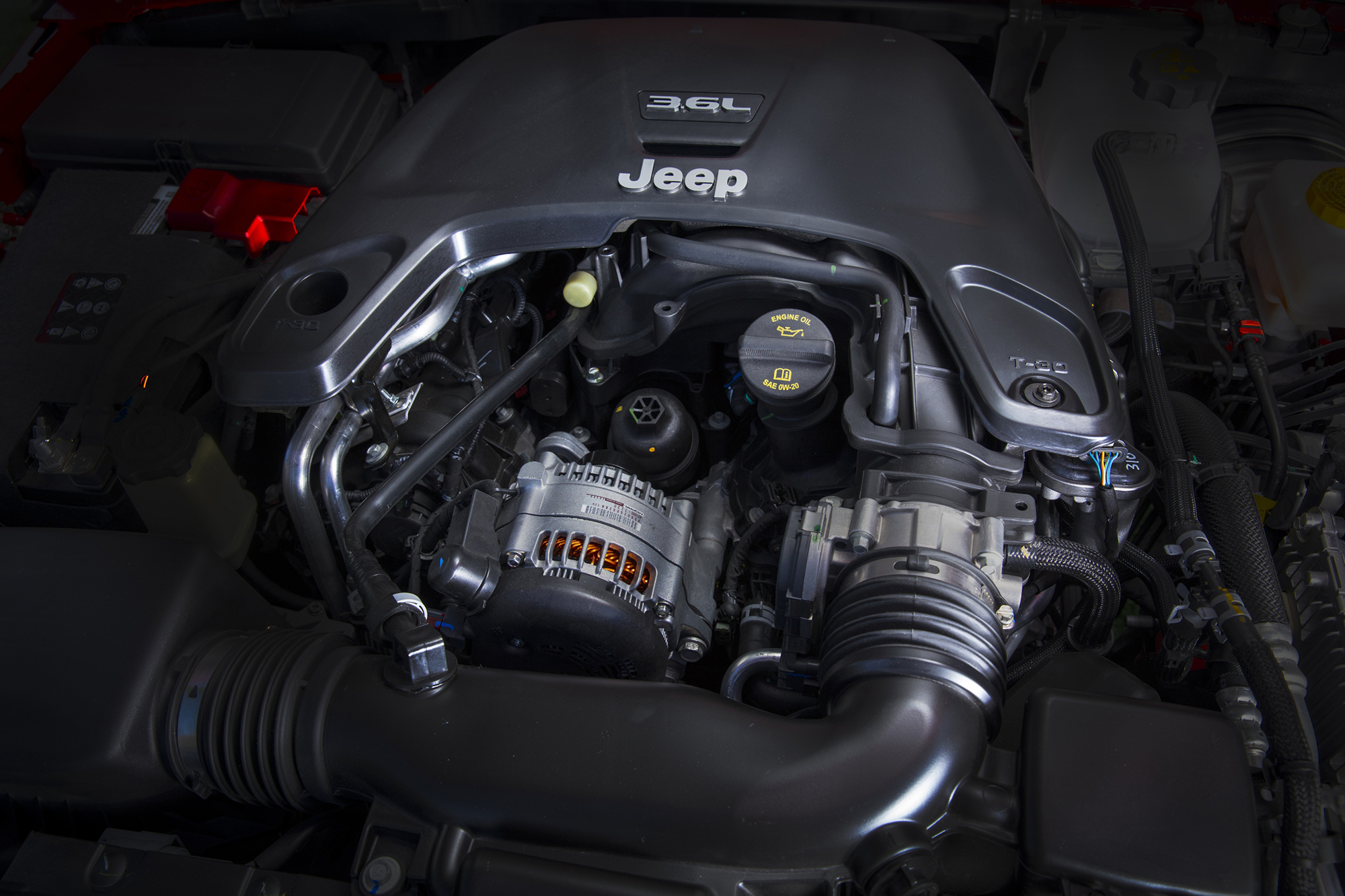
Jeep offers two versions now of this long-standing engine — a standard V6 strictly for the manual crowd and an optional eTorque model only for automatic that employs mild-hybrid technology to help provide better power at lower rpms, as well as improved fuel economy. Jeep used this same tech for two years in its 2.0L turbo four-cylinder engine.
Both engines offer 285 horsepower and 260 lb-ft. of torque, with variable valve technology that helps push that torque curve into a lower rpm range.
The Pentastar itself has been Jeep’s signature Wrangler engine since the 2012 model year, and has been a reliable, award-winning motor throughout its lifespan. Not much has changed on this model, either. It still has solid off-the-line power and sharp acceleration in either edition, but until you reach higher speeds, the automatic transmission can kick on and downshift at times depending on your throttle control, unlike the 2.0L.
At its peak though, performance is exceptional and you’ll have no issue merging into traffic, passing other vehicles, or simply gaining the acceleration you need.
With the engine having been around now for over nine years, its fuel economy has been pretty well established and overall is a slight step down from the 2.0L. We found the manual 3.6L hovered between 15-16 mpg around town and right about 19 mpg on the highway. The 3.6L eTorque version did bump those numbers up slightly thanks to that electric motor supplying a bit more low-end power. We saw stop-and-go city traffic average around 18 mpg, and highway driving push to 21 mpg.
Keep in mind, these numbers were obtained on a four-door Unlimited version and the two-door model may vary a bit, but probably not that much to swing a decision one way or another.
As far as off-road performance, where the 2.0L requires a bit of ‘break in’ time to figure out throttle control, the 3.6L is very smooth when slowly moving along, and has a bit better ability to crawl over some obstacles thanks to its powerful off-idle torque. Not to say you can’t quickly get used to the 2.0L in the dirt, but the Pentastar just makes it somewhat easier. Plus, the power boosts at higher rpms allows plenty of wheel speed to plow through mud and sand.
3.0L EcoDiesel
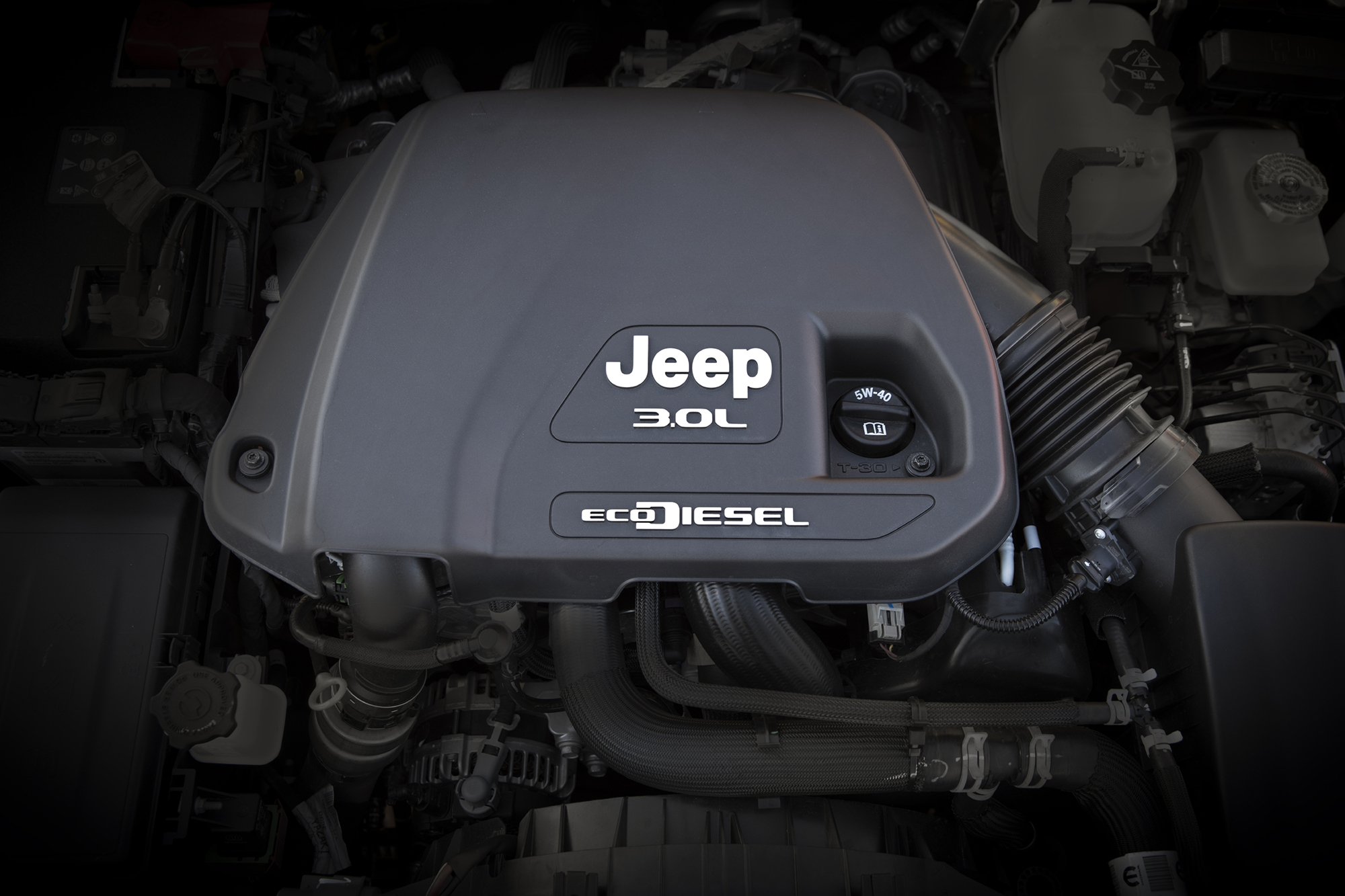
Although the Jeep community had been clamoring for a production Wrangler diesel for years, the vehicle did not get one in the lineup until the 2020 edition. And for those who waited, hoping for the day, well, their patience was definitely rewarded.
Powerfully rewarded.
Sadly though, this engine is on the chopping block for 2023 and will not make the leap into 2024.
For those still interested in the Wrangler's first-ever production diesel, this third-generation engine made its way into Wrangler after first being employed in Dodge’s Ram truck and Grand Cherokee. And there may be those slightly disappointed by the engine’s 260 horsepower output — lower than the other powerplant options.
But then there is torque. A massive 442 lb-ft. of torque that absolutely overpowers the other engines. For reference, the diesel’s torque output is about 70 percent more than the 3.6L and 50 percent better than the 2.0L. In fact, besides the Wrangler 392 and 4xe, no other production Jeep engine in history has offered this much low-end power.
That much torque easily overcomes the slightly lower horsepower output and makes for an extremely responsive, smooth burst of power when you accelerate, even though the diesel Wrangler is upwards of 500 pounds heavier than its gasoline-fueled counterpart.
Now, there is a caveat to all this power and that is affordability. The 3.0L diesel option runs about $4,500 above the stock 2.0L on that eight-speed automatic, and $3,000 more than the 3.6L. Diesel is also only available on Unlimited Wranglers with automatic transmissions, but it is offered in all trim levels so you do not have to specifically target the Rubicon to get that torque boost.
As far as fuel economy, those with diesel engines do expect better mpg and this version is no exception. The EPA rates this between 22 mpg (city) and 29 (hwy), and after about 15,000 miles we’ve seen just under those numbers both in stop-and-go traffic (about 20 mpg) and freeway (28 mpg). Both of those equate to a nice mpg jump over either the 2.0L and 3.6L, however because of the diesel’s pricey initial investment, it will probably take many years of ownership to recoup that cost in fuel savings.
For most, though, the diesel isn’t about on-road performance or fuel economy. It is all about the off-road capability. And with that, the diesel shines bright.
Its powerful torque is specifically targeted at the lower rpm range, so slow rock crawling and climbing in 4 Lo can almost be accomplished without any throttle at all. Even when you touch the accelerator, the response is smooth — not jumpy — with almost no lag.
When encountering sand or sticky mud, the diesel’s low end torque isn’t the only strong point. The engine quickly delivers needed acceleration to power through just about anything that tries to grab it on the trail. Plus, those who move to larger tires will definitely notice how much easier it is to turn that rubber with the powerful diesel engine.
Again though, the only real downside to this diesel goes back to price. But once you get a taste of its power, even cost may not be an obstacle.
2.0L Hybrid 4xe
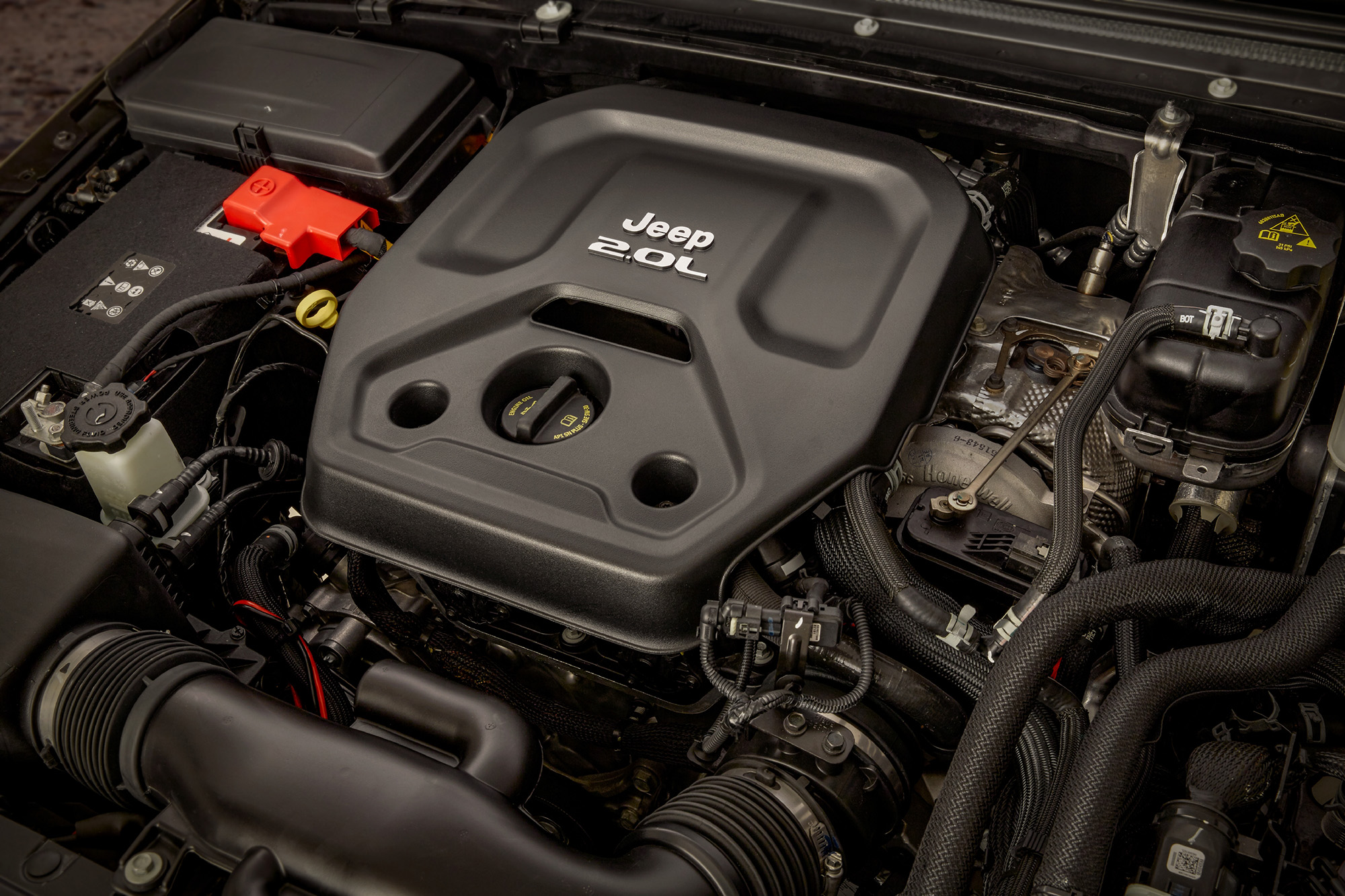
Jeep's super popular 4xe augments the standard Wrangler's 2.0-liter turbo I-4 and eight-speed automatic with two electric motors and a 17-kWh battery. And with that set up, the vehicle hits a total output of 375 horsepower and 470 lb-ft of torque, which means this is the second most powerful Wrangler behind the Rubicon 392. It also shoots from 0-60 mph in the high second range for two-wheel drive, or lower five seconds in four-wheel auto.
Additionally, all that go power and torque are available instantly which makes for a pretty intense off-roading vehicle, just as much as on-pavement. Trail obstacles that in the past were seemingly unsurmountable turn into speed bumps your can almost crawl over with light throttle.
As for efficiency, when you combine its gas and electric power, the 4xe is rated at 49 mpg-e combined, and can travel around 22 miles on electric power alone. Change it to gasoline only, and that mileage sits about 20 mpg. Jeep does provide a Level 1 charger that can fully recharge the battery in about 12 hours, or you can opt for the Level Two version that significantly cuts down on charging time to just over two hours.
Like the diesel Wrangler, the 4xe is upwards of 800 pounds heavier than your standard Wrangler. And while the engine easily can propel the vehicle, you do need to be cautious of tire wear over time because of the instant torque and longer breaking required thanks to that weight.
Additionally, while you may received a rebate from purchasing a hybrid vehicle, that tag on these is still going to be higher than the average Wrangler. If you on- and off-pavement activities are all not far, then you may recoup some of that coin from fuel savings, but just don't forget to plug in your charger when you have the chance.
6.3L 392 V-8 Hemi

Let's be honest, if you have the ability to pick up one of these 392 Wranglers, then you already consider this engine the best Jeep has to offer at the moment. And with a meaty 470 horsepower and 470 lb-ft of torque, it is definitely the most powerful. Cutting from 0-60 mph in a scant 4.2 seconds, it also moves the fastest and turns most trail adventure into amusement park excitement.
All that power and torque does come with a downside, as you can imagine its fuel rating is not the best at 13 city and 17 highway. Of course, adding larger tires, a suspension and other heavy protective items will only make the number drop. But in reality, those picking up a Wrangler with this engine understand, and accept, the lower fuel rating.
Now, people have been shoving V-8 engines into Wranglers for years, but this particular engine marks the first Wrangler production V-8 and is pretty much a nod and response to what Ford's Bronco brings to the market. Realistically though, most are not getting this for the overall on-pavement experience. While this engine definitely redefines what it means to drive a Wrangler on the street, its powerful horses and churning torque even surpass the ecodiesel when off-roading. So much so that the brand developed a special hood to better vent air and reduce water intake, as well as strengthening the frame, installing a two-inch suspension lift and beefing up the rear brakes. Because with great power, comes great driving responsibility.
Of course, also with great power comes a price. And this Wrangler engine — as well as all the components needed for its performance —make it the most expensive Wrangler in history.
Still, if you want total off-road power domination, as well as a unique on-road driving experience, this is the engine for you.
Engine Thoughts
When it comes to choosing the best Jeep Wrangler engine, like we said before, there is really no single right or wrong decision and any of these will give most people what they want from a Jeep motor.
However, there are some factors to consider and first is cost. Between all of these, the standard 2.0L turbo four-cylinder has the on-road power, fuel economy, and provides enough off-road punch to most likely satisfy a large percentage of people. That’s also the reason why you’ll see this engine predominately featured on most dealer lots.
There are those out there, though, who demand more from their vehicle when off-roading. So for that crowd, minus the cost — the Wrangler 392, EcoDiesel, and even the punchy 4xe, are all highly recommended (in that order) to get all that extra torque and performance on what will, no doubt, be heavily modified Wranglers.
The 3.6L eTorque Pentastar does lag behind the other engines both in fuel economy for the most part, and on-road power, until you work into higher speeds. And for those reasons, when looking at 'normal' Wranglers, many do not feel the need to spend that extra $1,500 over the 2.0's cost, for the option. It’s also why this motor is tough to find on dealer lots. However, the eTorque does provide more off-idle torque than the 2.0L when trail riding, so there could be a case made for slightly better overall rock crawling performance without splurging on a 392, diesel or 4xe. Then again, is that case worth an extra $1,500?
Regardless, the ability to have a choice on your Wrangler’s engine is certainly a welcome addition these days after years of being force fed only one option.












